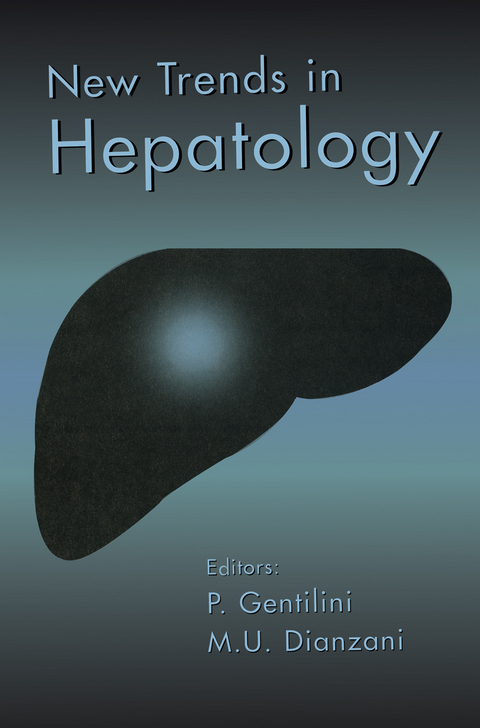
New Trends in Hepatology
Springer (Verlag)
978-94-010-6646-4 (ISBN)
Section 1. Pathogenetic Mechanisms of Liver Injury.- 1 4-Hydroxy alkenals, products of lipid peroxidation, as signals for biochemical functions of normal cells.- 2 Oxidative stress and protein kinase C activity modulation.- 3 Oxidative damage in chronic liver disease.- 4 Chronic ethanol consumption impairs dolichol levels and glycosylation processes in rat liver microsomes and Golgi apparatus.- 5 Compartmentation and redox state of thiols and proteins during acute ethanol intoxication in rats.- 6 Possible role of ethanol-derived free radicals in the pathogenesis of alcohol-induced liver damage.- 7 Hepatic iron overload induced by Phenylhydrazine: release of iron in a free form and DNA damage.- 8 The effects of development of the MDR 1 phenotype on cell susceptibility to undergoing lipid peroxidation and ionizing radiation.- 9 Molecular and cellular aspects of iron-mediated liver toxicity.- 10 The cellular and molecular basis of liver fibrogenesis.- 11 Proliferation of hepatic stellate cells and lipid peroxidation: changes due to polyphenols.- 12 Reoxygenation injury in isolated rat hepatocytes.- 13 Oxidative stress and cell damage following orthotopic liver transplantation.- 14 The genomic response of liver cells to post-ischemic reperfusion and oxidative stress.- Section 2. Pathophysiology of Bile Secretion.- 15 Cytotoxic and protective effects of bile salts in vitro.- 16 Lamellar bodies in human gallbladder bile.- 17 Hepatocyte lipid-metabolic interplays and the cholesterol secretion process to bile: insights from rat studies.- Section 3 Insights in Hepatic Carcinogenesis.- 18 Lipid peroxidation and hepatocarcinogenesis: ?-glutamyl transpeptidase- dependent oxidant stress in hepatic preneoplastic lesions and HEPG2 hepatoma cells.- 19 Antioxidant system inhepatocellular carcinoma.- 20 Loss of heterozygosity of the long arm of chromosome 16 in hepatocellular carcinoma on liver cirrhosis.- 21 Potential molecular mechanisms of viral liver carcinogenesis.- 22 Prevalence of wild-type and variant transcripts of liver estrogen receptors in chronic liver disease.- Section 4. Pathogenetic Aspects of Hepatitis C Virus (HCV) Infection.- 23 Molecular biology of HCV: implications in epidemiology and diagnosis of infection.- 24 Cell-mediated immune response in hepatitis C virus (HCV) infection: are different strategies adopted by HCV and hepatitis B virus to persist?.- 25 The epidemiological and clinical aspects of hepatitis C in Italy.- 26 Diagnostic evaluation of patients with chronic HCV infection.- 27 Correlation between hepatitis C virus RNA levels in serum, liver and peripheral blood mononuclear cells and severity of liver disease in chronic hepatitis C patients.- 28 Hepatitis C virus lymphotropism and possible pathogenetic implications.- 29 HCV-induced cryoglobulinemic vasculitis: pathogenesis and therapeutic implications.- Section 5. Clinical Aspects of Chronic Liver Disease.- 30 Cirrhosis associated congestive gastropathy. Physiopathological aspects.- 31 Treatment of ascites in cirrhosis.- 32 Spectral EEG monitoring of hepatic encephalopathy.- 33 Interaction between non steroidal anti inflammatory drugs and interferon-? system: mechanisms and basis for the clinical use in the treatment of chronic viral hepatitis.- 34 Pharmacological treatment of primary biliary cirrhosis.
| Zusatzinfo | 352 p. |
|---|---|
| Verlagsort | Dordrecht |
| Sprache | englisch |
| Maße | 155 x 235 mm |
| Themenwelt | Medizinische Fachgebiete ► Innere Medizin ► Gastroenterologie |
| Medizinische Fachgebiete ► Innere Medizin ► Hepatologie | |
| ISBN-10 | 94-010-6646-9 / 9401066469 |
| ISBN-13 | 978-94-010-6646-4 / 9789401066464 |
| Zustand | Neuware |
| Informationen gemäß Produktsicherheitsverordnung (GPSR) | |
| Haben Sie eine Frage zum Produkt? |
aus dem Bereich


